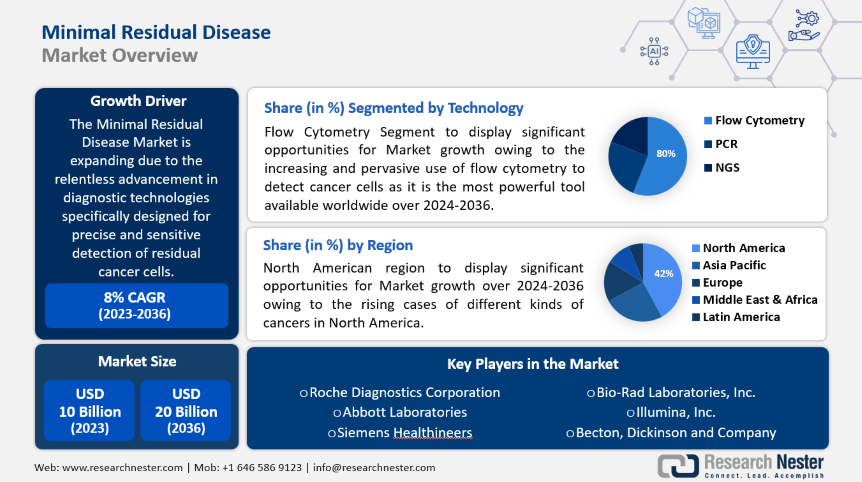
Minimal Residual Disease Market size was over USD 2.46 billion in 2024 and is anticipated to cross USD 9.89 billion by 2037, growing at more than 11.3% CAGR during the forecast period i.e., between 2025-2037. In the year 2025, the industry size of minimal residual disease is estimated at USD 2.68 billion. One of the predominant factors propelling the minimal residual disease (MRD) revenue share is the relentless advancement in diagnostic technologies specifically designed for precise and sensitive detection of residual cancer cells.
Recent years have seen significant growth in SGD testing use, largely because of the Genomics England 100,000 Genomes Project. As the understanding of cancer biology deepens, there is an increasing demand for sophisticated tools capable of identifying minimal residual disease with heightened accuracy, thereby influencing treatment decisions and patient outcomes. Continuous innovations in diagnostic methodologies, notably the integration of next-generation sequencing (NGS), liquid biopsy techniques, and highly sensitive imaging technologies, have significantly enhanced the capabilities of MRD detection.
In addition, the increasing prevalence of cancer ailment worldwide will also significantly propel the minimal residual disease market growth rate. In fact, globally people 69 years of age and younger, who were in the prime of their lives, accounted for around 57% of new cancer cases and 47% of cancer deaths. By providing more accurate and reliable information about the presence of minimal residual disease, clinicians can tailor treatment plans more precisely, leading to improved patient outcomes and a higher likelihood of successful long-term remission.

Author Credits: Radhika Pawar
Copyright © 2024 Research Nester. All Rights Reserved

FREE Sample Copy includes market overview, growth trends, statistical charts & tables, forecast estimates, and much more.
Have questions before ordering this report?